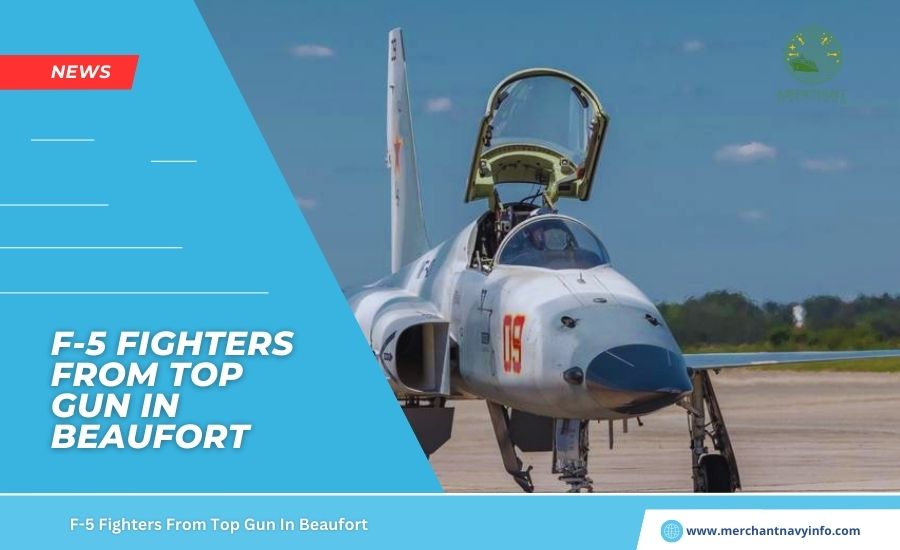
F-5 fighters from the famous Top Gun series arrive in Beaufort to train pilots for the “next fight.”
A new “adversary” squadron of F-5N Tiger II fighters – perhaps best known for appearing in a Hollywood blockbuster nearly 30 years ago – will soon be training F-35 pilots over the East Coast.
The first three F-5N Tiger IIs arrived at Marine Corps Air Station Beaufort (MCAS) on May 30. The new squadron is providing air combat training to U.S. Marine Corps F-35 pilots to prepare them for their “next phase,” a “big fight” against a real foreign enemy. According to the Marine Corps, this is the first adversary fighter squadron stationed on the East Coast.
Pilots in the adversary squadron study foreign enemy tactics and maneuvers, then use them in training to create realistic scenarios. U.S. Marine Corps F-5N Tiger IIs will arrive at Marine Corps Air Station Beaufort on May 30, 2024. VMFT-402 will be formally redesignated as Marine Adversary Squadron 2 in September.
“We have a rapidly growing fleet of F-35s, especially now on the East Coast, and Marine aviation has an insatiable need for all the support and training the adversary can get.” “The next fight is right in front of us,” said Lt. Col. Andrew Christ, commander of Marine Fighter Squadron (VMFT) 402, the new adversary squadron’s name.
Maj. Erin Mathis, VMFT-402’s operations officer, told The Beaufort Gazette and Island Post on Friday. The squadron currently has four members but is expected to grow to 10 or 12.
The Marines said the aircraft flew from Yuma, Arizona, home to another adversary squadron serving on the West Coast. According to manufacturer Northrop Grumman, the first Tiger was introduced in 1964, and the last was produced in 1989.
If you’ve seen the movie Top Gun, you’ve probably seen the single-seat, twin-engine F-5N Tiger II. In the film, an early version of the F-5 was painted black and served as a fictional MiG-28 flown by the enemy.
In one of the most memorable scenes in the film, Lt. Pete “Maverick” Mitchell (Cruise) flips his fighter. So that his plane is directly above a MiG, he points his finger at the enemy MiG pilot and says, “Cheers.”
Meanwhile, Nick “Gus” Bradshaw (Anthony Edwards) snaps a photo and quips, “Look at that little bird!”. Three F-5N Tiger IIs arrived at Marine Corps Air Station Beaufort in May. The tactical fighters and attack aircraft will train with other squadrons as an “enemy squadron.” Mattis, operations officer for VMFT-402, said it was “kind of cool” to have the opportunity to fly an aircraft so ingrained in pop culture.
Mattis, a former F-18 pilot stationed at Beaufort from 2015 to 2020, said the differences between flying the F5 and its more modern cousins can’t be underestimated. The F5’s small size and underpowered nature can sometimes be difficult, and Mattis said the slowdown combines two factors. He added that its instruments are mostly analog, sometimes called “steam gauges,” compared to the F-35’s digital systems. Mattis added that the F5 is extremely reliable and “very good to fly.”
Final Thoughts
“If I can get an airplane off the ground, I’ll fly it,” Mattis said. MCAS Beaufort, long known as Fighter Town East, is home to the Marine Corps Fighter Strike Training Squadron 501, the primary F-35 training squadron on the East Coast.
Marine Corps officials said VMFT 402, the F-5N Tiger II squadron. It will provide the East Coast with a training resource similar to what another adversary squadron based in Yuma already provides on the West Coast. “We’ve needed this capability on the East Coast for years, but it hasn’t come fast enough,” Crist said.
“We need to be ready for a high level of combat.” The Marines added that basing adversary support at the F-5 squadron would save money because the aircraft costs less per hour to fly. It is closer to training ranges on the East Coast.
The F-5N Tiger II may be old, but it’s still capable of Mach 1.6, or 1,227 mph. The Marines said the adversary mission is critical to training current and future F-35 pilots.
“As experts in adversary tactics and experts in how our adversary fights. We give fleet forces a unique understanding of the adversary’s fundamental operations,” Mattis said.









